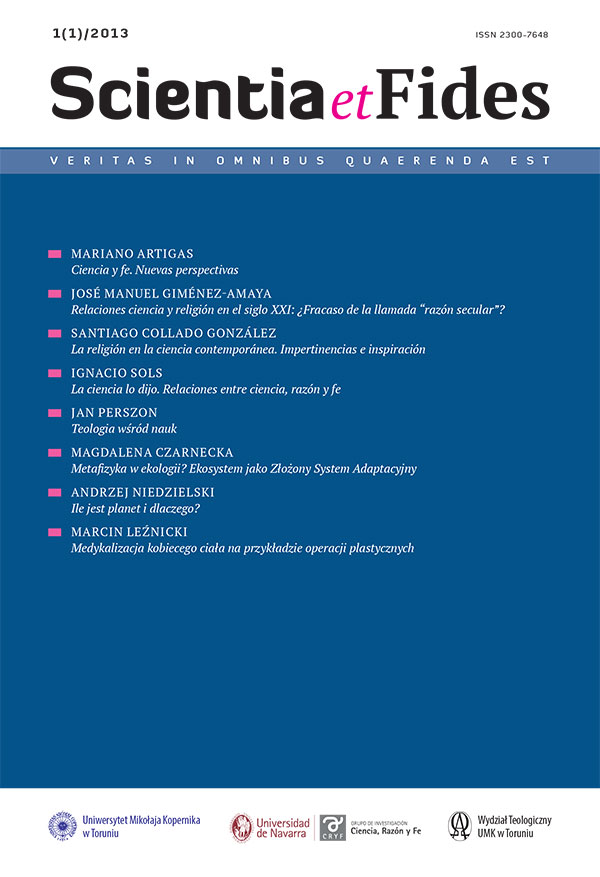Ile jest planet i dlaczego?
DOI:
https://doi.org/10.12775/SetF.2013.007Keywords
astronomy, planets, exoplanetsAbstract
What is a planet and how many planets are there?
A brief outlook of evolution of the concept of planet in astronomy and a very short summary of current status of extrasolar planet searches results are presented. It is shown that the concept evolved substantially between the ancient Greek ,,wandering star’’ and current understanding of these celestial bodies and in every epoch reflected current status of the development of physical sciences. However, planets are difficult objects to define and even these days we see evolution of the concept as perfectly illustrated by the history of Pluton and the planet-Brown Dwarf vague border. Obviously the public appreciates the current searches for planets around other stars as possible sources of information concerning alien life. In this context it is important to notice that common understanding of planets as the only possible cradles of such life is not correct and life may be appear to be present on other bodies as well.
References
Perryman, Michael. 2011. The Exoplanet Handbook. Cambridge: Cambridge University Press.
Rybka, Eugeniusz. 1983. Astronomia ogólna. Warszawa: PWN.
Schneider, Jean. The Extrasolar Planets Encyclopaedia. http://www.exoplanet.eu/
Włodarczyk, Jarosław. 2012. Księżyc w nauce i kulturze Zachodu. Poznań: Dom Wydawniczy Rebis.
Downloads
Published
How to Cite
Issue
Section
License

This work is licensed under a Creative Commons Attribution-NoDerivatives 4.0 International License.
CC BY ND 4.0. The Creator/Contributor is the Licensor, who grants the Licensee a non-exclusive license to use the Work on the fields indicated in the License Agreement.
- The Licensor grants the Licensee a non-exclusive license to use the Work/related rights item specified in § 1 within the following fields: a) recording of Work/related rights item; b) reproduction (multiplication) of Work/related rights item in print and digital technology (e-book, audiobook); c) placing the copies of the multiplied Work/related rights item on the market; d) entering the Work/related rights item to computer memory; e) distribution of the work in electronic version in the open access form on the basis of Creative Commons license (CC BY-ND 3.0) via the digital platform of the Nicolaus Copernicus University Press and file repository of the Nicolaus Copernicus University.
- Usage of the recorded Work by the Licensee within the above fields is not restricted by time, numbers or territory.
- The Licensor grants the license for the Work/related rights item to the Licensee free of charge and for an unspecified period of time.
FULL TEXT License Agreement
Stats
Number of views and downloads: 567
Number of citations: 0



